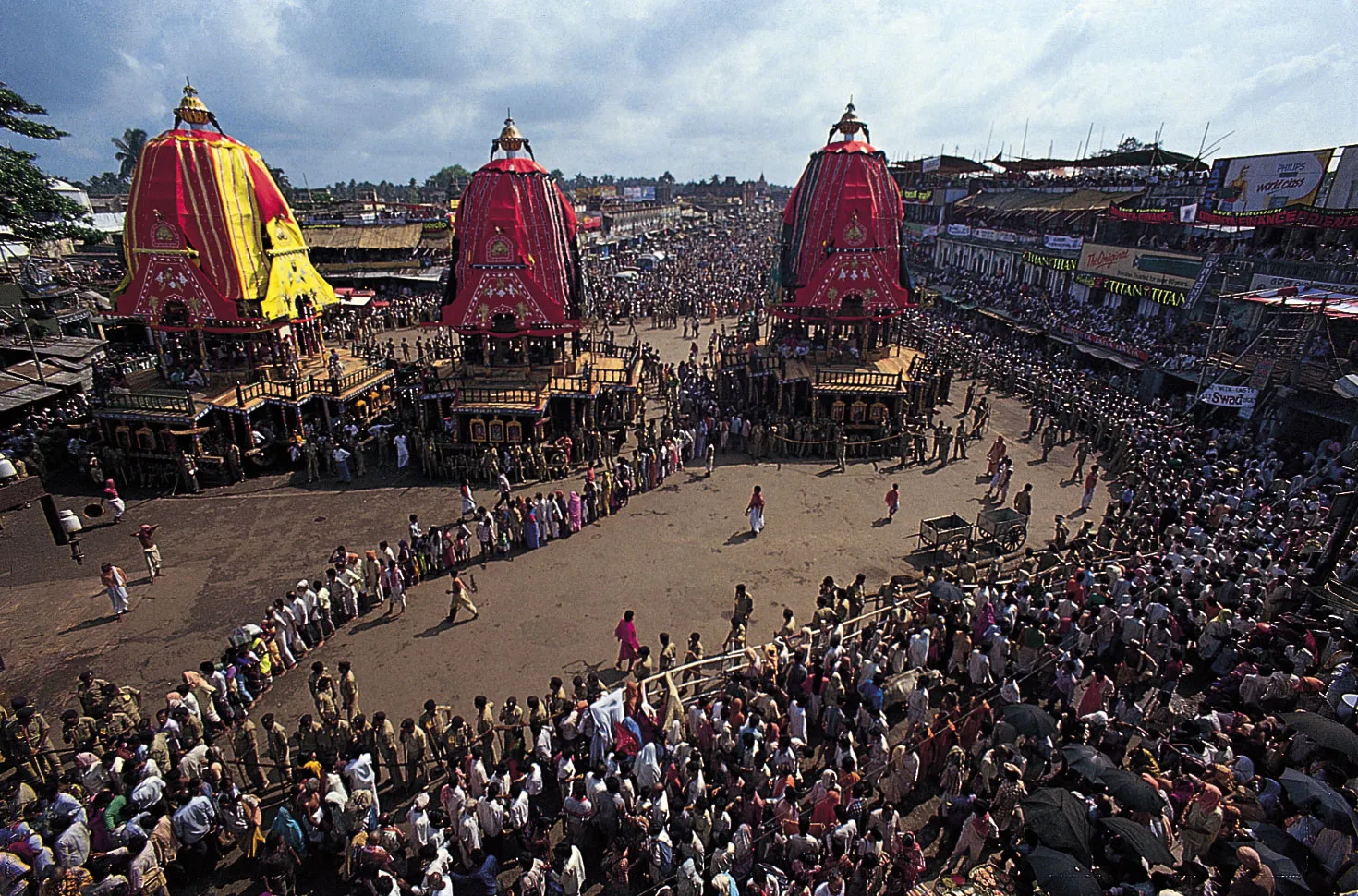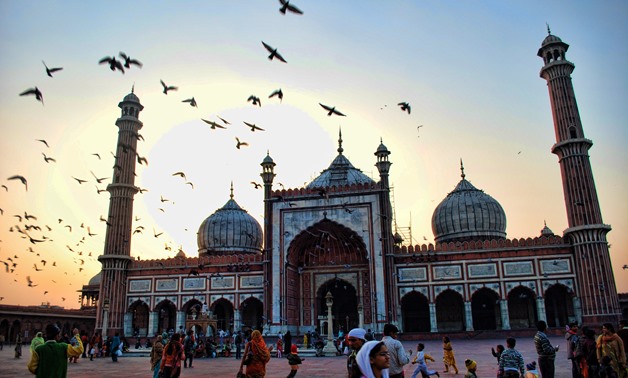Buddhism holds a very special place in Indian history. Indian political-cultural history is incomplete without mentioning Buddhism & Gautam Buddha. But unlike the other religions, Buddhism was once dead in the country. However, according to the reports, this faith is again gaining popularity among Indians. As per the census 2011, the total Buddhist population of India is 8.4 Million which is approximately 0.70% of the total population of the country. Buddhism was one of the earliest revolts against Brahmanism. It said no to all unnecessary rituals in India and spread a message of peace throughout the land.
( Also Read More – Hinduism in India- Origins, Philosophies, and Facts )
Buddhism- Origins:
Historically we know that the Gautam Buddha of ‘Kapilvastu’ established Buddhism but the literary work of Buddhism mentions three previous Buddhas before Gautam Buddha. Gautam’s real name was Siddhartha. He was the crowned prince. However at the age of 30, renounced all his name, family, wife, child, and reign to search for the truth. He then started his meditation under a tree and achieved Nirvana. The tree is presently in Bodh Gaya in Bihar, India. In the course of time, Gautam Buddha travelled along the Gangetic plain and preached the message of peace.
There is a very famous story about Gautam Buddha which tells that he was destined to become a monk. But his father wouldn’t want it and thus tried everything to let him not see the suffering. But Gautam at the age of 30 went out for a royal meeting and saw poverty, sickness, age & death. Then after he renounced his royal life and left for meditation in the forest. After 49 days of consecutive meditation, he attained enlightenment. Then he became Gautam Buddha.
Gautam Buddha referred to himself as ‘Tathagata’ which means ‘thus-gone’. The later Buddhism tradition referred to him as a ‘Samyaksambuddha’- The Perfectly Self-Awakened One. The emperor Bimbisara accepted Buddhism as his personal faith and established many Buddhist monarchies as Vihara. This term later gave the name of the region ‘Bihar’.
Buddhism- Growth:
The exact historical dates of Buddha are uncertain. Most historians believe that he lived in the 5th or 6th century BCE. He established his sermon in Sarnath to five companions. They became the first Sangha. There Buddha established the very first ‘Wheel of Dharma’.
As he established no successor, his students started practising the oral teachings of their master. The Sangha then started Buddhist counselling. The first council was at Rajgraha after the death of Buddha. The second council was held at Vaishali. It dealt with money, drinking palm wine, and other irregularities. The third council at Pataliputra was summoned by the emperor Ashoka in the 3rd Century BCE. The Kushan King Kanishka summoned the fourth council in Kashmir.
The fourth council in Kashmir split Buddhism into two branches- Mahayana & Hinayana. Mahayana believed in the divinity of Gautam Buddha whereas Hinayana regarded him as a common man who achieved Nirvana through his self-awareness.
The Great Ashoka was a king of the Maurya dynasty and lived during the 3rd Century BCE. He accepted Buddhism after the devastating war of Kalinga. Ashoka used to rule over 80-85% of India which includes Afghanistan & Pakistan. The Buddhist emperor sends many embassies to China, Sri Lanka, Bengal, Assam, Balochistan, and many more countries. Earlier records suggest their success. We come across several Chinese, Greek, and Pali inscriptions mentioning the Buddhist monks from the land of India.
The Kushan Empire in Indian history is also famous for its contribution to Buddhism from 60 AD-270 AD. They were supporters of this faith and established many monarchies and schools. Another big name in its history is the Pala Dynasty in 730 CE-1130 CE. During this time five Mahaviharas were famous for their interconnected network of studies. They are Nalanda, Vikramshila, Somapura, Odantapura, and Jaggadala.
( Read More – Islam in India- Origins, Politics, Philosophies, and Books )
Buddhism- Declination & Revival:
We see a decline in Buddhism during the Gupta period in the 4th-5th Century CE. The ritualistic Mahayana got merged with Hinduism. As a result, the differences got blurred. Both cultures accepted each other’s traditions to a significant extent. Also, Buddhist monarchies lost their control over land and influence.
Later on, the Hun invasion and the Muslim invasion caused a major negative impact on this faith. Most monks flee from the country to escape the Muslim persecution while some went to south Indian Hindu kingdoms where they were able to resist the Muslim domination.
The modern revival of Buddhism started in the 19th century. The Buddhist monarchies such as the Bodhi Society (1891), Bengal Buddhist Association (1892), and the Young Men’s Buddhist Association (1898) took their inspiration from Sri Lankan Buddhists and started the restoration of Buddhism in India. After Independence Jawaharlal Nehru looked to the Mauryan Empire for symbols and took the Ashok Pillars and Ashok Chakra as some national symbols for the integrity & sovereignty of the country. In the 1950s, B.R. Ambedkar, a Dalit became a Buddhist and led the Dalit movement. The Dalit movement gave birth to a new branch of Buddhism- Navayana. We see rapid growth in Buddhism after 1959 when the Dalai Lama came to India from Tibet.
Note- Many Hindus believe Buddha to be the ninth incarnation of Lord Vishnu. His statue as Vasudeva is present at Gunaighar in Comilla.
Contribution of Buddhism to Indian Society:
- Buddhism integrated the whole nation as one. It shattered the caste system and stood against the unnecessary rituals of Brahmanism. The simplification of the religious rituals attracted people. It became a place where people could put their faith strongly & without any discrimination.
- Many Kings during the ancient times established Buddhist monarchies called the Viharas. The great Ashoka established a great number of stupas across the country. The Stupa art at Sanchi is world-famous for its art. We see Buddhist art & painting in Ajanta caves too.
- Buddhism gave rise to education in India. The five big schools across the country Nalanda, Vikramsila, Somapura, Odantapura, and Jaggadala were Buddhist Viharas only which later turned into giant centres for study.
- The great king Ashoka left his sword and embraced the policy of love. It directly affected the militants of the country. People started giving their zeal for war which further led to failure against foreign invasions.
- Buddhism is a missionary religion. It went to several countries with the help of Kings in India. This helped India to develop relationships with the outer world.
Conclusion:
Buddhism is an Indian-origin religion that went to other countries. Unfortunately, unlike other religions, Buddhism saw greater suffering. It grew and declined in the mediaeval era. Then it revived its old traditions & monarchies in the 19th century and onwards. In 2010, the Government of India reopened Nalanda University in Bihar.





I like this site it’s a master piece! Glad I detected this ohttps://69v.topn google.Raise blog range